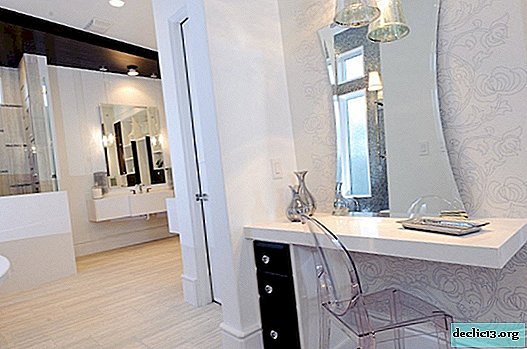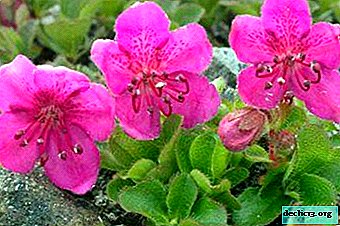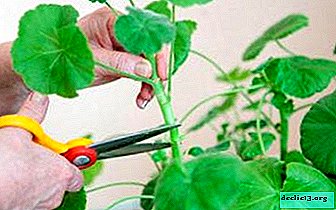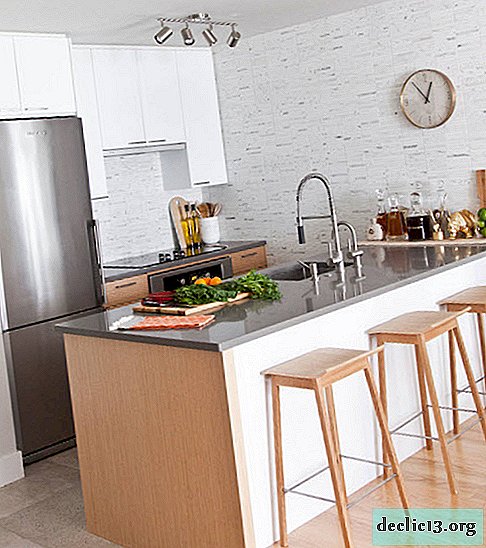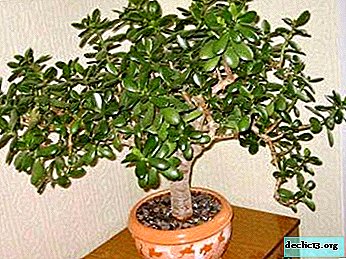Is an azalea transplant necessary after purchase: step-by-step instructions and care tips
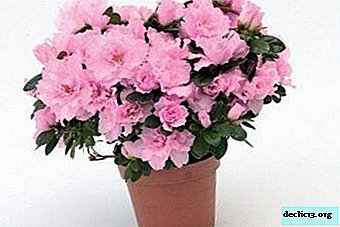
Azalea is a beautiful and very delicate flower. From the first days of stay in the house, this plant needs to be given increased attention. The lushly flowering bush brought from the store, without proper care, can drop leaves and buds and even die.
To prevent these unpleasant events, you need to know how to properly contain azalea after a purchase in a store, as well as how to transplant a flower and whether it can be done when it is blooming.
How to care for her in the store?
Azaleas come to stores from nurseries, where they care little about the development of the root system of plants. Bushes artificially prepared for flowering and planted in transport pots with a small amount of peat mixture are treated with synthetic compounds. These substances introduce azalea into a state similar to sleep. Fertilizers are added to the ground, the supply of which is enough to maintain the freshness and flowering of the plant for two to three months.
Recommendations
The transportation soil, which contains the plant in the store, has the ability to compress and grow firmly to the roots. In addition, this land does not contain nutrients.
Chemical flowering stimulants used in nurseries, activates the formation of buds, inhibiting the development of the root and green mass. Such a plant is at risk of infection with fungal infections.
Reference. In order for the root system to develop normally, after acquiring the azalea, a transplant is necessary. This procedure is recommended to be carried out 10-15 days after purchase, giving the plant time to adapt to new conditions.How to determine if an indoor transplant is needed or not?
 After the purchase you need to carefully inspect the plant. In the case of mold, fungus, root problems, as well as in poor soil conditions, azalea needs to be transplanted into quality soil, removing damaged areas.
After the purchase you need to carefully inspect the plant. In the case of mold, fungus, root problems, as well as in poor soil conditions, azalea needs to be transplanted into quality soil, removing damaged areas.
It is recommended to transplant young plants annually, adults - every two years. The procedure must be carried out when the flowering period ends. If the azalea has been flooded or the pot has become small, an unplanned transplant is required.
If the plant is blooming
Azalea should not be transplanted during flowering. At this time, the plant spends all its efforts on the formation of buds and the maintenance of flowers. The transplant procedure will lead to extreme stress, as a result of which the azalea can lose leaves, flowers and buds. It is very difficult to get a plant out of this state. In case you need to urgently save the azalea, before transplanting, you need to carefully remove most of the blossoming flowers and colored buds.
You can find out more about when it is better to transplant azaleas and how to do it here.
Step-by-step instruction
Inventory preparation
- Prepare a spacious container with water. An ordinary basin will do. Take boiled or filtered water.
- Treat the knife, pruning shears or scissors with alcohol-containing liquid or calcine.
Pot selection
You should choose a pot five centimeters above the old one, wide and deep enough. Both clay and plastic flowerpots will do. You can choose a flower pot or any other pot.
Soil preparation
 The acidity of the substrate should be pH 4.5-5.5. It is better to buy in the store a special soil mixture intended for azaleas. Add baking powder to the purchased soil:
The acidity of the substrate should be pH 4.5-5.5. It is better to buy in the store a special soil mixture intended for azaleas. Add baking powder to the purchased soil:
- Mix azalea ground with vermiculite.
- Crush there sphagnum.
- Add some river sand.
- Mix well.
It is quite difficult to independently form the soil for azalea at home. Possible options are:
With peat and needles
- Peat - 1 part.
- Rotted needles - 2 parts.
With the addition of sand, humus and earth
- Peat - 1 part.
- Humus - 1 part.
- Sand - 1 part.
- Sod land - 1 part.
- Sheet earth - 1 part.
- Coniferous land - 5 parts.
With moss
- Sand - 1 part.
- Dried shredded moss sphagnum - 1 part.
- Rotted needles - 2 parts.
Root inspection
Important! By the time of transplantation, the aerial part of the azalea should be trimmed, cut off dead branches, remove dry leaves, faded buds.- Carefully remove the plant from the pot.
- Inspect the root system. Usually the earthen lump is dense and penetrated by many roots. In some areas, traces of dead tissue can be seen.
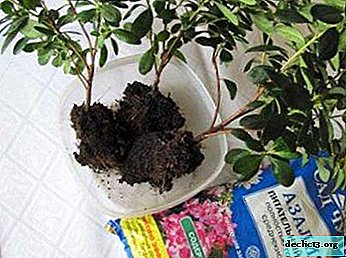 If the bush is too large, you need to divide it. To do this, cut the earthen lump into several parts. Each bush needs a separate pot.
If the bush is too large, you need to divide it. To do this, cut the earthen lump into several parts. Each bush needs a separate pot.- Earthen lump cut about a centimeter from the bottom, on the sides and at the root neck.
- Make longitudinal cuts from top to bottom along the entire circumference, with a depth of 0.5 centimeters, slightly gutting the earthen lump.
- Completely dissolve in warm clean water "Kornevin" and "Zircon" according to the instructions.
- Dip the earthen lump of the plant for 20-30 minutes in a container with a solution.
New pot room
- At the bottom of the pot pour drainage three centimeters thick, consisting of small stones.
- Place a few slivers, river sand, steamed pine bark or moss on top. The layer thickness should not exceed two centimeters.
- Then sprinkle Trichodermin for the prevention of fungi and rot.
- Place a little soil mixture on top, spread evenly over the flowerpot.
- Remove the azalea from the container with water, slightly squeeze the earthen lump, allow the liquid to drain.
- Place the plant in the prepared soil in the center of the pot.
- Around the azalea, gradually fill up fresh soil so that the root neck of the bush is not affected. Add soil to the sides of the earthen coma. The root neck does not need to be deepened deep into the ground.
- Slightly compact the soil around the roots.
- After transplantation, slightly moisten the substrate with a solution in which the root system has been soaked.
From the video you will learn how to transplant purchased azalea correctly:
More details on how to transplant azalea at home can be found in this material.
First watering
The first time after transplantation, soil moistening is not required. Three to four days after the procedure, it is necessary to gradually resume watering. To do this, use well-made boiled water at room temperature. For speedy recovery, it is sometimes recommended to add Zircon to the water for irrigation.
Difficulties and problems
 During the procedure, you need to pay great attention to the roots of azalea. When transplanting, special care is important, namely, it is necessary to preserve the microflora of the root system, which the plant supports throughout life. Violation of microflora can lead to diseases and death of azaleas.
During the procedure, you need to pay great attention to the roots of azalea. When transplanting, special care is important, namely, it is necessary to preserve the microflora of the root system, which the plant supports throughout life. Violation of microflora can lead to diseases and death of azaleas.
The roots of the plant are thin, fibrous. The earthen lump is like a sponge, the transport soil is tightly attached to the roots. It is very difficult to clean the root system of the old substrate. It also complicates the division process when it is necessary to plant a bush that is too large.
When transplanting, it is recommended to make incisions on an earthen coma. This will help the roots develop new soil. Otherwise, there is a risk that they will not germinate. Having not received nutrients, the roots will dry out, the azalea will die.
How to care?
The flower weakened after the procedure can be treated with growth stimulants. After transplanting at home, you need to provide the plant with proper care and favorable conditions for successful recovery.
Seat selection
After the procedure, it is necessary to put the azalea in a warm, bright place, protected from direct sunlight, away from drafts and heating devices. A window on the west or north side will do.
Lighting
Azalea loves the light, but does not tolerate the direct rays of the sun. The lack of light can be compensated by artificial lighting. First, you should shade the plant a little, put it on the window without protection after a couple of weeks. If the weather is dry, warm weather, you can put the azalea on the balcony or loggia, providing a slight shadow.
Humidity
It is important to create conditions of high humidity. If the room is dry, pour expanded clay into the pan and pour water regularly. Make sure that expanded clay does not dry out.
On a note. To prevent drying of the leaves, it is recommended to spray the plant every other day.Temperature
From October to December, the optimum temperature for azalea should be from +6 to + 10ºС. It is in such conditions that the formation of buds for further flowering is underway.
When the buds begin to blossom, the temperature should be increased to + 17ºС. In summer, indicators should not exceed + 18ºС, in winter should not fall below + 5ºС.
Watering
Potted azalea should be watered every two to three days in the morning. Pour water through a drip tray. After 15 minutes, drain excess water. It is important that the earthen lump is completely saturated with moisture.
It is necessary to regularly monitor soil moisture. Do not allow the withering of an earthen coma.
Irrigation requires clean boiled water at room temperature, which must be defended for at least two days. To increase the acidity of the soil, a drop of lemon juice can be added to the water.
Top dressing
Azalea does not need to be fertilized within one to two months after transplantation. After the procedure, the plant will be weakened, as a result of feeding, the roots may burn.
After recovery, fertilizer must be applied every seven days in the spring and summer. In September, top dressing becomes less frequent and takes place every two weeks. In winter they completely stop. Fertilizing plants is required with special compositions for azaleas. When forming buds, superphosphate top dressing is used.
An azalea transplant after a purchase is a complex event that requires certain knowledge and strength. If everything is done correctly, one or two months after the procedure the acclimatization process is successfully completed and the losses of the root system are compensated. With proper care, the bush develops safely, blooms luxuriantly and grows.

 If the bush is too large, you need to divide it. To do this, cut the earthen lump into several parts. Each bush needs a separate pot.
If the bush is too large, you need to divide it. To do this, cut the earthen lump into several parts. Each bush needs a separate pot.




